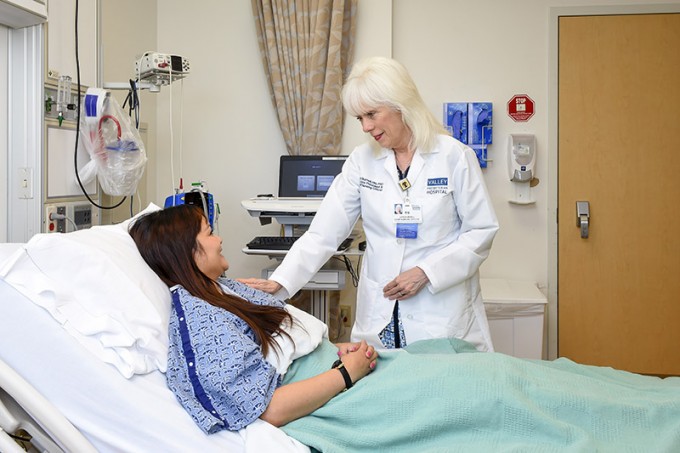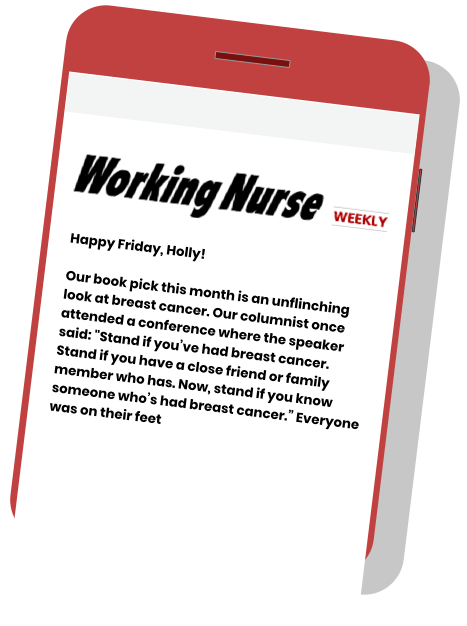CNO Roundtable 2020
Your Path to Leadership
Q: What is one aspect of your current role as chief nursing officer that you found especially challenging to learn?

Lori Burnell, RN, Ph.D., NEA-BC
(pictured above, with a patient)
Sr. Vice President / Chief Nursing Officer
Valley Presbyterian Hospital
One of the most challenging aspects of my role as the CNO of a safety net hospital has been shifting focus from the search for what’s right to the search for what could go wrong. Searching for what could go wrong does not come naturally to me; in the past, I made hospital rounds looking for people to compliment. However, after studying the characteristics of high reliability organizations (HRO), I have become more preoccupied with potential failures.
Adopting the HRO philosophy has changed my path and priorities. It has made me more reluctant to simplify processes and explanations, more conscious of how current situations can compromise safety and more sensitive to the concerns of frontline staff and subject-matter experts. Achieving high reliability takes an organizational mindset. As a result, we’ve changed or added several processes and practices, such as having executives review every incident report within the past 24 hours and personally follow up on events in their areas of accountability.
Jennifer R. Castaldo, RN, BSN, MSHA, NEA-BC
Vice President / Chief Nursing Officer
Henry Mayo Newhall Hospital
It was important for me to learn that the ability to lead is not something that you acquire by having your nursing degree or higher education. Leadership is about character, and the path to leadership in nursing begins with a strong sense of empathy and a desire to do what you can for others. The most effective and influential leaders begin their journey with a sense of purpose, humility and honesty.
Authentic nurse leaders understand that if our life’s work does not stand for something bigger than ourselves, our ability to lead others lacks purpose. Purpose is my north star. If you are interested in becoming a leader within the nursing profession, my recommendation is that you start with yourself. We all have the ability to transform circumstances, open up possibilities and create lasting value for ourselves and for others. The most effective nurse leaders I know are experts at this.
Derek Drake, RN, DNP, NE-BC, CNML, CNL
Chief Nursing Officer
St. Francis Medical Center




